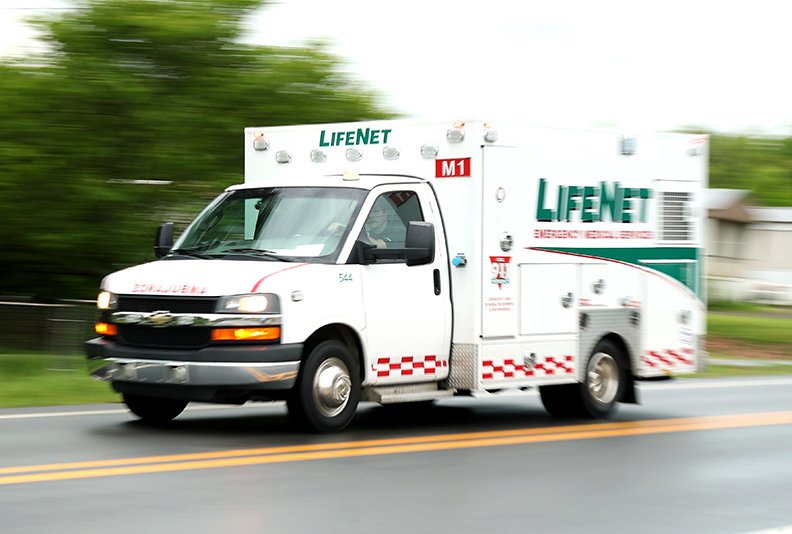Patients who suffered from a sudden cardiac arrest in the Hot Springs area in 2019 had a survival rate of 16%, which is higher than the national average of 10% and 1% lower than the 17% average for 2018 in this area, according to the 2019 Sudden Cardiac Arrest report released this week by LifeNet.
In 2019, LifeNet's Hot Springs division responded to 393 calls for patients who had suffered an SCA, a life-threatening emergency that occurs when the heart suddenly stops beating which can strike people of all ages and "leads to death in minutes if the person does not get help right away," a news release said.
Of the 186 patients who were viable for resuscitation efforts, 72 patients had return of spontaneous circulation, or ROSC, and 29 survived to hospital discharge, for a survival of 16%. The division includes Garland County and parts of Hot Spring County.
"Our team saved the lives of 29 sudden cardiac arrest victims during 2019, and that is something we are proud of," Jason Gartner, general manager of LifeNet in Hot Springs, said in the release.
"It takes dispatchers, paramedics, EMTs, and first responders who assist on scene, along with bystanders who witness the event and start CPR, and our hospital partners who provide post resuscitative care, all working together to save lives," he said. "We are very proud to report our survival rate at 16% continues to be above the national average of 10%, largely due to the strength of the chain of survival in our community. Of course, we are always looking for ways to improve the chain."
In 2018, LifeNet responded to 376 calls for patients who had suffered an SCA and attempted resuscitation on 165 of the patients, resulting in 118 transports to the hospital and 47 field terminations, with 44% of the patients having return of spontaneous circulation and 28 patients surviving to discharge, for a survival percentage of 17%.
The Chain of Survival has five key links, the release said. First, someone must recognize they have witnessed a person going into SCA and call 911 to activate the EMS system. Second, emergency medical dispatchers must be trained to enable callers to do quality CPR until medical help arrives on scene. Third, if an automatic external defibrillator is available, early defibrillation must occur.
"These first three steps need to happen within the first 5 to 8 minutes for an SCA victim to have a viable chance at survival. Without these steps happening, the chance of any EMS team getting ROSC on a patient when they arrive is very slim, and for each minute that these steps don't happen, the chance gets slimmer," the release said.
The fourth step in the chain of survival is early advanced medical care by EMS prior to and while transporting the patient to the hospital. Post resuscitation care at the hospital is the final link in the chain of survival that leads to hospital discharge.
Helping improve survival rates is not only an EMS and hospital team effort, but it is also a community effort. Someone witnessed 119 patients suffer their SCA out of the 186 patients LifeNet crews attempted resuscitative efforts on, the release said.
"This really highlights why it is important for more people in our community to learn how to perform CPR. It also shows why we need more AEDs placed in the community and more people trained on how to use them," Gartner said.
LifeNet's survival rate increased to 33% for patients who were both in ventricular fibrillation and who had someone witness their event. VF, one of the abnormal electrical activities that cause the heart to quiver, stopping it from effectively pumping blood, is short-lived and will deteriorate to asystole (a flat line) if not treated promptly, the release said.
Shocking the heart with an AED is the only effective treatment for VF. The AED sends an electrical current through the chest to the heart with the goal of stopping the VF and providing an opportunity for the heart's normal electrical system to take control. This current helps the heart reorganize the electrical activity so it can pump blood again.
LifeNet offers an AED Matching Grant to help nonprofits and first responder organizations purchase AEDs and for-profit businesses can purchase AEDs through LifeNet at cost.
LifeNet also offers a free bystander CPR and AED use class which is designed to teach everyday people how to perform quality chest compressions and utilize an AED. The hourlong class includes a 20-minute lecture and hands-on practice. LifeNet offers the class to groups of 10 plus people wherever it is most convenient for the group, the release states.
To learn more about sudden cardiac arrest, you can download LifeNet's 2019 SCA Report at http://www.LifeNetEMS.org/SCAReport.
To schedule a free class, or to learn more about the AED Matching Fund Program, call 903-556-0301.
Local on 05/24/2020
